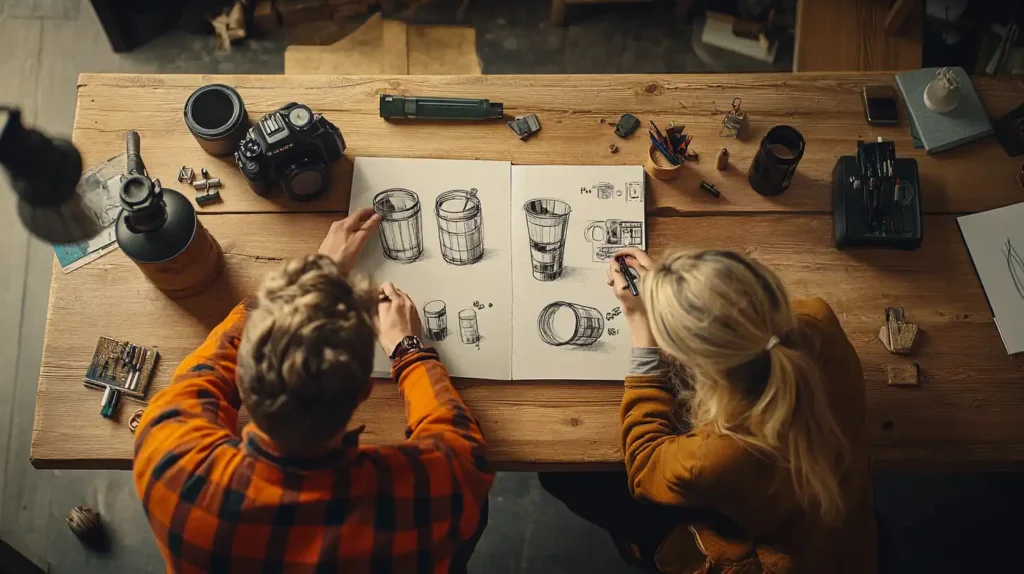Vacuum insulated stainless steel bottles are widely appreciated for their ability to maintain the temperature of beverages, keeping drinks hot or cold for extended periods. The manufacturing process of these bottles is intricate and involves several steps to ensure their efficiency, durability, and safety. Here’s a comprehensive look into how these bottles are made, drawing insights from various sources.
Table of Contents
Step-by-Step Manufacturing Process
1. Material Preparation
The process begins with the selection of high-quality stainless steel. Typically, 304 stainless steel is used due to its excellent resistance to corrosion, durability, and non-reactive nature, which is essential for food and beverage containers.
2. Cutting and Shaping
Cutting: The stainless steel sheets are cut into precise shapes and sizes required for the bottle components. This is done using high-precision cutting machines to ensure accuracy.
Shaping: The cut pieces are then formed into cylindrical shapes through a process called deep drawing. In this process, a stainless steel disc is placed on a die and pressed into a cylindrical shape by a punch. This forms the body of the bottle.
3. Necking and Threading
Necking: After shaping, the cylinder’s top is reduced to create the neck of the bottle. This is done using a necking machine that gradually reduces the diameter of the top portion.
Threading: Threads are then cut into the neck of the bottle to allow for a secure fit of the cap. This is typically done using CNC (Computer Numerical Control) machines for precision.
4. Forming the Inner and Outer Walls
The vacuum insulation technology relies on having two walls: an inner and an outer one.
Inner Wall: The inner wall is formed separately, often using a similar deep drawing process. It is slightly smaller in diameter compared to the outer wall to create space for the vacuum.
Outer Wall: The outer wall is then placed around the inner wall. The two are welded together at the top and bottom to create a single unit with a space between them.
5. Creating the Vacuum
The space between the inner and outer walls needs to be devoid of air to provide effective insulation.
Vacuum Creation: The bottles are placed in a vacuum chamber where the air between the walls is evacuated. This creates a vacuum, which is crucial for minimizing heat transfer.
Sealing: Once the vacuum is created, the gap is sealed to maintain the vacuum. This is typically done using a vacuum sealing machine that ensures an airtight seal.
6. Adding Insulation and Coating
To enhance the insulating properties and durability, additional insulation materials may be added, and the exterior of the bottle may be coated.
Insulation: Some bottles include an additional layer of copper or other insulating materials to improve temperature retention.
Coating: The exterior of the bottle is often powder-coated or painted for durability and aesthetics. This coating also provides a better grip and protects the bottle from scratches and impacts.
7. Assembly of Components
Lid and Seal: The lids are manufactured separately, often including plastic or silicone components to ensure a leak-proof seal. These are assembled and fitted to the bottle.
Final Assembly: The bottle’s body, inner components, and lid are assembled together. Quality control checks are performed at this stage to ensure that all parts fit correctly and function as intended.
8. Quality Control and Testing
Before the bottles are packaged and shipped, they undergo rigorous testing to ensure they meet quality standards.
Temperature Testing: The bottles are tested for their ability to maintain temperature over time. This involves filling them with hot or cold liquids and measuring temperature changes over a specified period.
Leak Testing: Each bottle is checked for leaks by filling them with water and inverting them to ensure no liquid escapes.
Durability Testing: The bottles are subjected to various stress tests, including drop tests and impact tests, to ensure they can withstand everyday use.
9. Packaging and Distribution
Once the bottles pass all quality control tests, they are cleaned, polished, and packaged for distribution. The packaging is designed to protect the bottles during transit and provide necessary information to the consumer.
Conclusion
The manufacturing process of vacuum insulated stainless steel bottles is a meticulous and multi-step procedure that ensures the product’s efficiency and durability. From material selection to quality control, each step is crucial in producing a high-quality bottle that can maintain beverage temperatures for extended periods.




